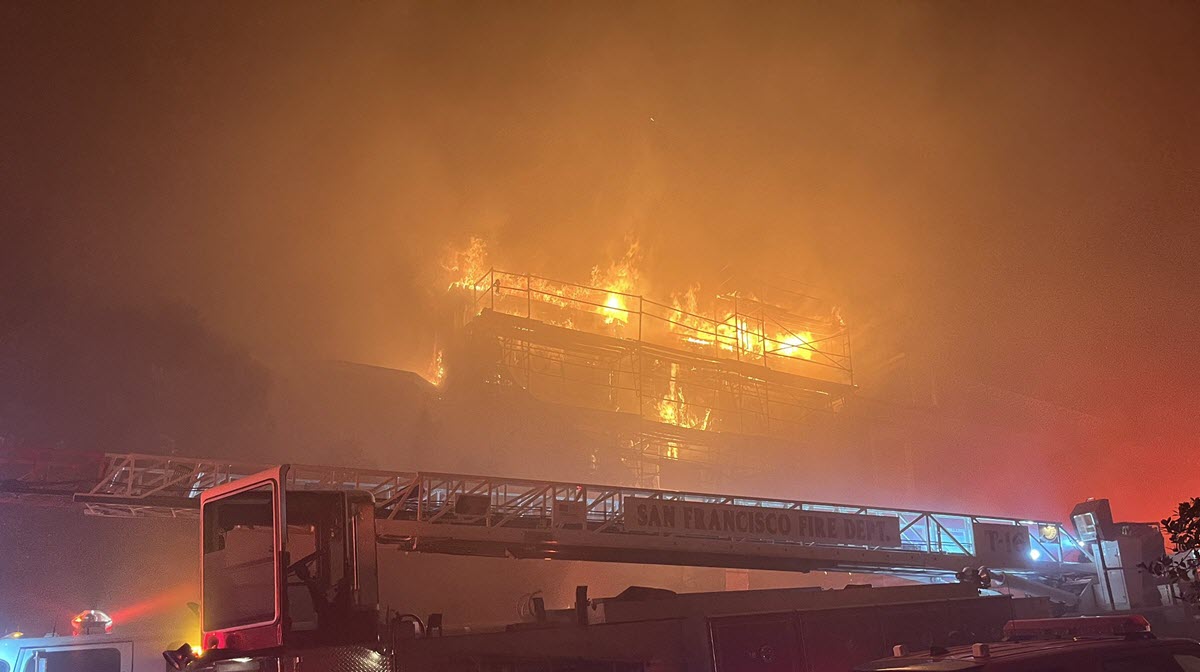San Francisco’s Treasure Island has gone through a myriad of incarnations over the years: host of the 1939 World’s Fair — Naval base — forlorn neighborhood on the bay. But its next phase could be its most intriguing — art hub.
A new plan by San Francisco’s Arts Commission and the Treasure Island Development Authority is expected to generate up to $50 million in development fees on the island to fill it with art over the next 20 years.
While the island undergoes a massive redevelopment project that will fill it with new homes and businesses, the new Treasure Island Arts Master Plan maps out a path to create one of the world’s most unique art destinations.
“I think it’s a vision to ensure that Treasure Island is a world class destination for arts and culture,” said Tom DeCaigny, Director of Cultural Affairs for the San Francisco Arts Commission. “But also an incredible place for all the new residents that will be living there.”
DeCaigny said the plan will start with three large art pieces over the next two years. One piece will anchor a new ferry landing, another will greet visitors coming to the island and a third will be installed at a hilltop park on Yerba Buena Island.
“I think one of the most exciting things about the arts master plan for Treasure Island,” DeCaigny said, “is the opportunity to really be on the ground level on one of the largest developments in San Francisco’s history.”
The arts commission has yet to release a request for proposals — but some new art is already on tap. Artist Tom Loughlin is creating a 25-foot steel circular sculpture built from three massive 12-ton girders salvaged from the old Eastern span of the Bay Bridge.
Local
Loughlin’s sculpture, which he self-funded, is scheduled to be installed this fall and will perch on the island’s Western edge, with unfettered views of the bay. The sculpture will vibrate with low frequencies that will create a low hum of sound.
“There’s this panoramic view of San Francisco, of both spans of the Bay Bridge,” Loughlin said. “The whole Bay Area is really visible from the spot and I love it as a place for the sculpture.”
The island is currently in a state of construction upheaval. Large mounds of dirt sit on the great lawn behind a chain link fence. Some vintage hangars used by artists have been torn down. Loughlin views the island as a blank canvas with the potential to be known for more than just its spectacular views.
“It’s an amazing thing,” Loughlin said, “and it’s an amazing new chapter in the history of the island.”
In a way, the island is coming full circle. It was constructed of dredged sand and quarried rock during the thirties to host the 1939 Golden Gate International Exposition — an extravaganza that featured numerous statues, buildings and fountains of various scale. Some of the original buildings remain as relics of a long lost era.
“Almost a hundred years ago it was a public gathering place for people to learn about each other and learn about the world,” Loughlin mused. “So I guess in some ways it’s going back to its origins.”
The island has long had the distinction of being a place famous for its views of somewhere else. But planners hope its sweeping redevelopment and slate of new art will inspire residents and visitors to look inward.
“We like to think of public art as the vehicle in which we are defining a neighborhood,” DeCaigny said. “We do hope that the master plan results in art being infused throughout the island.”



